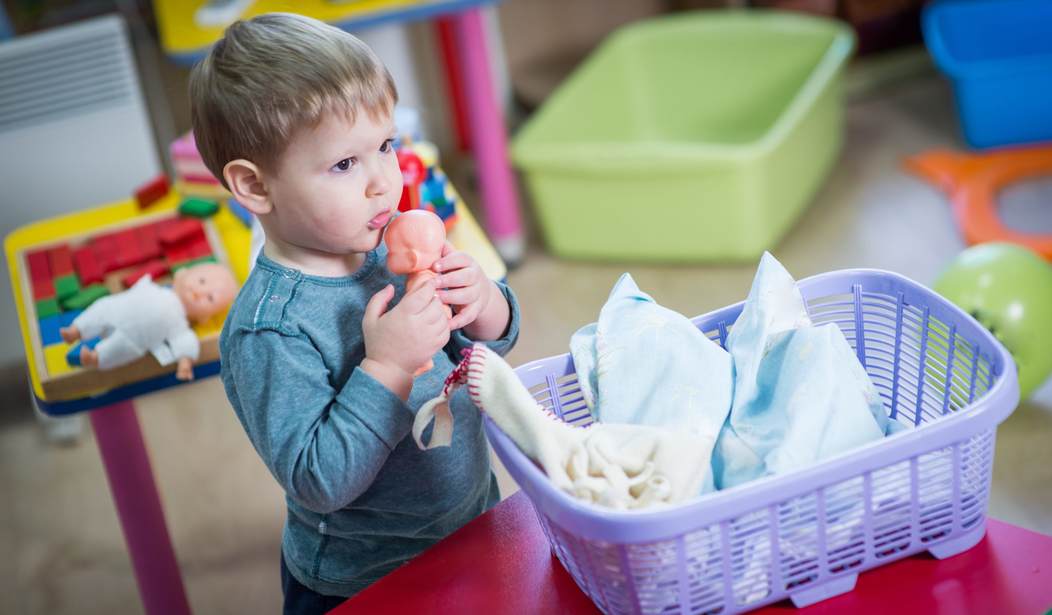Have your heard of Gender-Neutral Parenting (GNP) yet? I was researching for this post and discovered this new philosophy. GNP, according to U.S. News and World Report:
…can be as simple as choosing a gender-neutral name for a newborn, or saying no to ‘blue is for boys and pink is for girls.’ Or it can be (rare) immersion, like declining to reveal a new baby’s gender beyond immediate family.
One author writes that GNP is the “desire not to pigeonhole a child into a specific gender based solely on their biological sex” or raising “your child without explicitly forcing preconceived gender norms onto them.”
Extreme examples of GNP can make the entire movement appear suspicious, however, when it comes to Gender-Neutral Parenting, I believe there are some principles that can benefit all parents.
Next page: 4 things parents can learn from the GNP movement.
1. Children have more to offer than their chromosomes.
While it is easy to look at these gender issues in sterile, biological terms, these bearers of the XY or XX chromosomes are our sons and daughters. One Vogue writer explains that “raising gender-neutral kids isn’t about erasing differences between girls or boys; rather, it’s about taking so much of our focus off a child’s gender.” She advises changing our dialogues with our kids so that we’re not confined only to what their gender suggests they should have an interest in.
2. Stereotypes are not a good enough reason to ban or encourage an activity.
As pointed out by GNP author Paige Lucas-Stannard, “Think Barbie saying ‘Math is hard’ and then ponder why so few women enter science, technology, engineering and medicine. Think ‘boys don’t play with baby dolls’ and then ponder why men don’t have the same skill level with newborns that women do.” These stereotypes can inhibit growth simply because of a historical norm. Keeping a kid from something solely because of today’s cultural standards does a great disservice to him.
3. Well-rounded kids have experiences in many things.
A few years ago I broke my foot and was not allowed to bear weight on it for six months. Per doctor’s orders, I could no longer stand in the kitchen and cook dinner. My husband stepped in and did all of our cooking for those months. My husband does not enjoy working in the kitchen, but he had been taught the basics of cooking and knew how to follow directions. When our son is old enough, he too will be taught how to cook several meals. Only teaching our son to do yard work or use power tools would limit his independence and leave him helpless in some situations. If we have a daughter someday, she will learn how to change a tire and know the difference between a Phillips and flathead screwdriver. I want to send my son into the world someday knowing he can function in more than just typical guy situations.
As one psychologist explains, “All kids should have dolls, because it teaches empathy, perspective taking, and nurturing… All kids should have Legos because it teaches spatial skills.” My goal is to produce a well-rounded person, not just a manly man.
4. An open dialogue about gender is helpful.
Talking to your children about gender will help you understand what they have heard and what they are thinking. With gender in the news so frequently, chances are your children are already thinking about the subject. Helping them to filter in the information coming at them will tell you where they stand on this important topic. While GNP would advocate children leading this conversation and choosing where they land on the “gender continuum,” I would advocate something different. Leaving too much ambiguity leads to confusion .“ Your children need your input and guidance to find the shore as they navigate the choppy waters of the gender identity discussion. As author Paige Lucas-Stannard points out, “Opening a dialogue is so much more powerful than a room full of gender neutral toys that raise no questions.”
Boys and girls naturally are different; any child development book can tell you that. Melissa Luke, an associate professor and coordinator of school counseling at Syracuse University says,
In lots of ways, traditional gender roles can stifle both boys and girls… and they can be limiting. On the flip side… traditional roles can provide some structure—a sense of safety and expectations—as long as they’re not overly rigid.
As with most things in life, a balanced approach can be a healthy way of teaching your children their identities as males or females.









Join the conversation as a VIP Member